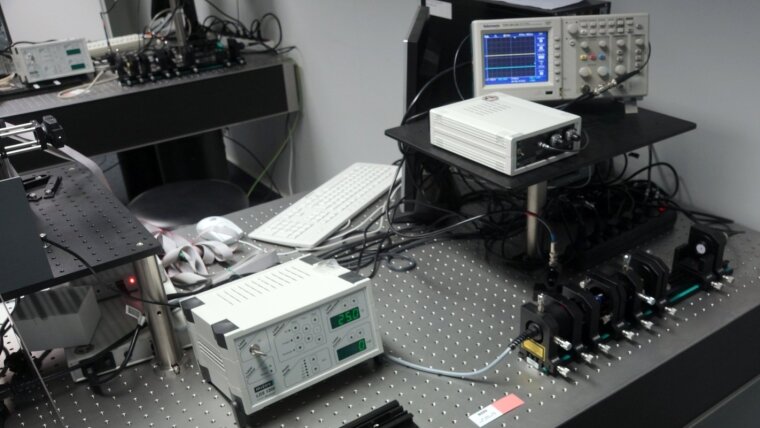
Nd:YAG (neodymium-doped yttrium aluminum garnet) is a crystal that is used for solid-state lasers. Since the invention of the laser, the delivered peak power has increased steadily. To date, powers up to a few petawatt are generated in a few facilities around the world with state-of-the-art technology. Clearly, such high powers cannot be sustained for a long periods of time; therefore, high peak powers are obtained by means of pulsed laser operation. In fact, extremely intense laser sources can emit light only for a fraction of a picosecond.
In this experiment, we perform Q-switching on our solid-state (Nd:YAG) laser to modulate the internal gain/losses of the laser cavity in order to achieve high peak power and short pulse duration. The "Q" in Q-switching stands for "quality factor" switching. The modulation of the Q-factor may be achieved actively or passively.
Further content and detailed descriptions are available to enrolled students via the course's page at the Moodle website of the Friedrich Schiller University Jena.